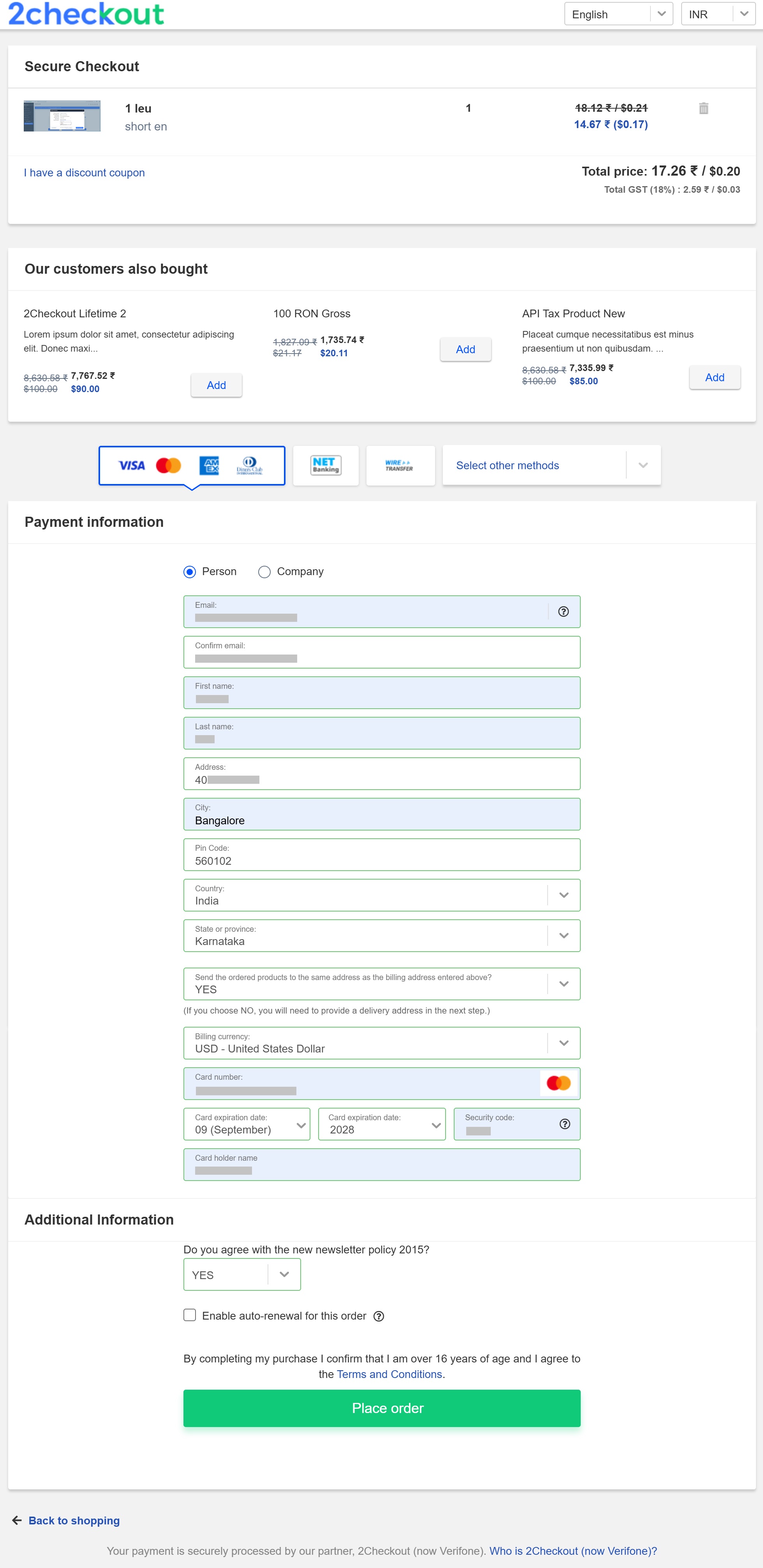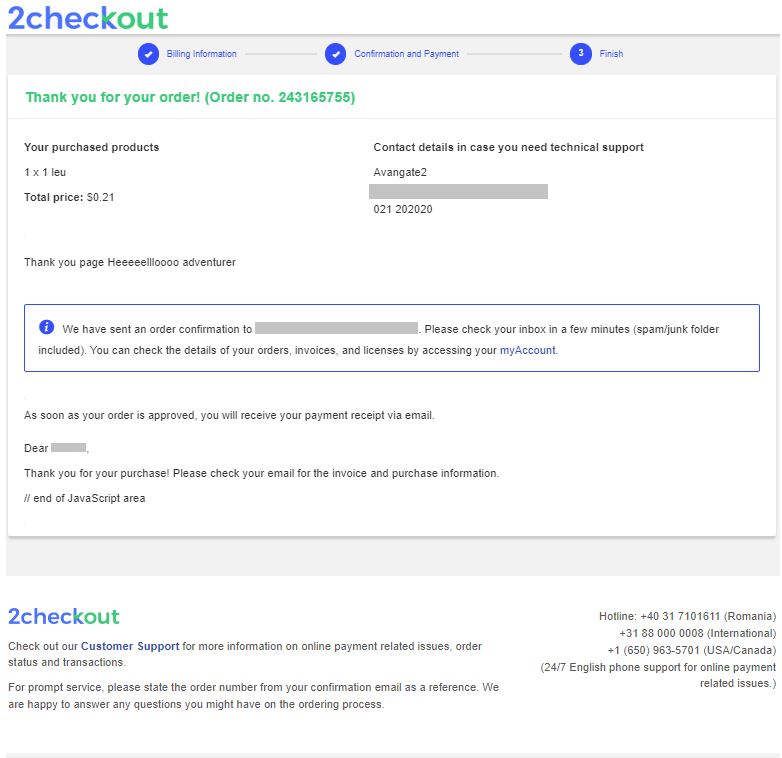Instant Notification Service (INS)
Overview
You can use the Instant Notification Service (INS) to automate order management processes by accepting order information via web posts. The INS is a service that will post sets of parameters to any URL you specify. Each post represents a message containing all the information you need about a specific event (such as when a recurring order re-bills successfully).
How can I use INS?
Use INS to automate back-end functions, including but not limited to:
- Creating end-user accounts
- Providing access to acquired services
- Fulfilling purchases
- Tracking orders and customers
- Engaging customers
How does INS work?
- Create one or multiple INS listener pages on your website.
- Configure the INS settings of your 2Checkout account to point to the URLs of your default/preferred listener pages.
- Set up multiple URLs if you require more listener pages, such as in testing scenarios in which you don’t want to use your default INS listener.
- 2Checkout sends webhook notifications to the endpoints you defined when shoppers acquire products/services from your online store. 2Checkout packages the content information and sends it using secure (HTTPS) POST, according to your INS settings.
- 2Checkout sends the INS parameters according to your setup from INS Settings. To customize the information available in the notifications, check the parameters from the INS settings page. Learn more about INS parameters here.
- 2Checkout uses a SHA2/SHA3 signature to validate the HTTPS POST. Calculate the signature using data sent and your 2Checkout account’s secret key, following the instructions included in this article.
- Your custom INS listener scripts consume the notifications and process the info received.
- Configure your INS listeners to output a read receipt confirmation on the listener page after receiving a valid INS message. This article includes guidance on how to generate the confirmation.
- In the absence of a confirmation from one of your INS listeners, 2Checkout will make 5 attempts to send notifications to that endpoint, according to the failure retry process.
- In the eventuality that 2Checkout fails to send INS or doesn’t receive a confirmation from your INS listener, it displays an error in your Control Panel, on the Dashboard.
Set up INS endpoints
- Login into your 2Checkout account.
- Navigate to INS settings under System settings.
- Click on Add endpoint to add a new URL configuration that will receive the notifications.
- Save your settings.
You can set up multiple endpoints for your INS notifications, for scenarios in which you have multiple Internal System that require to receive this information. You can add an unlimited number of endpoints that will receive notifications.
Debug INS
To view or debug INS notifications during the integration phase, place TEST orders.
Alternatively, search for specific orders in the Reports center menu and click on the API & Webhooks section. When you access the Instant Notification Service webhooks activity, you have the option to resend notifications. This action will help you retrieve the INS data already sent in case technical issues occurred and the set of parameters did not successfully reach the defined endpoints.
You can resend notifications one by one (individual resend) or you can select multiple notifications that you want to resend via one single Resend action (bulk resend). Notifications selected for resend action will be included in the resend process, meaning that the resend action will not be performed instantly. In the resend process the initial set of parameters will be included, meaning the values will not be recalculated by the system. In the webhooks reports, resent notifications will be marked differently than the original/initial ones. The Resend action will consider only the original set of parameters, meaning that if you choose to resend both original and already resent notifications, the system will only consider the original set of parameters and only once a unique notification will be resent.
Secure your INS script
For security reasons, 2Checkout recommends that you restrict access to the INS script.


